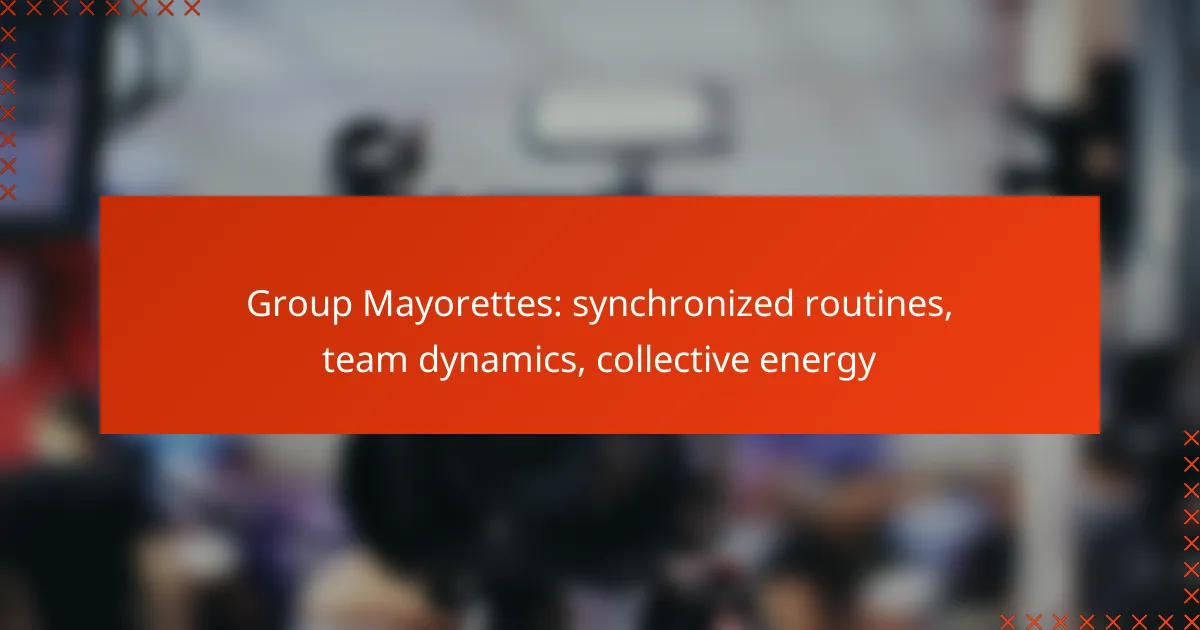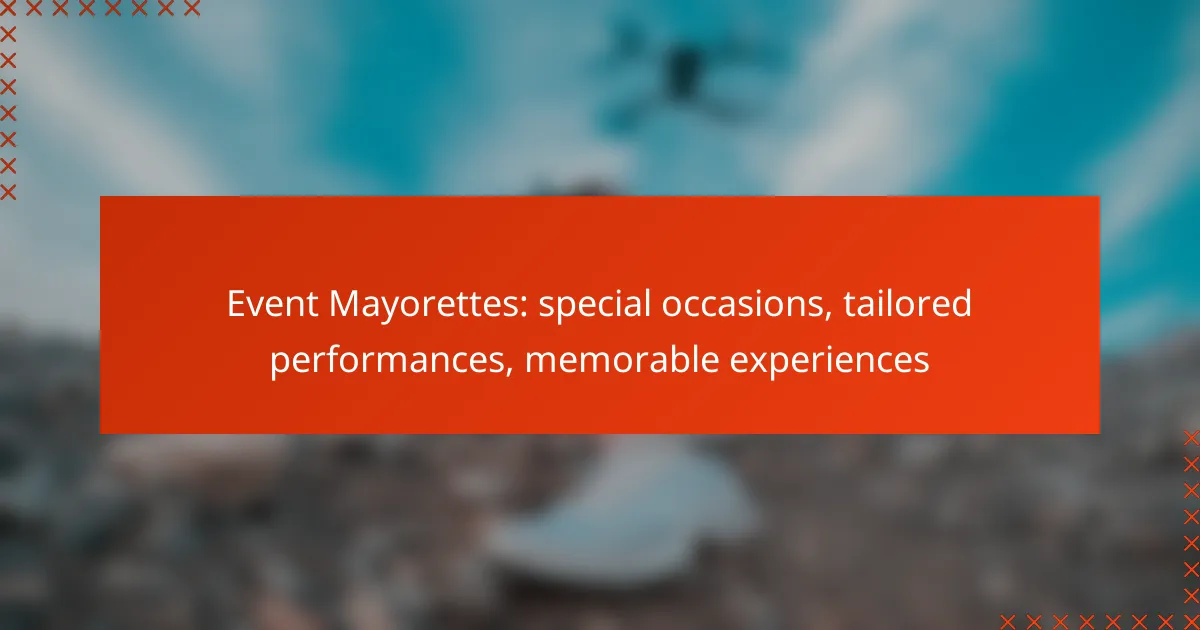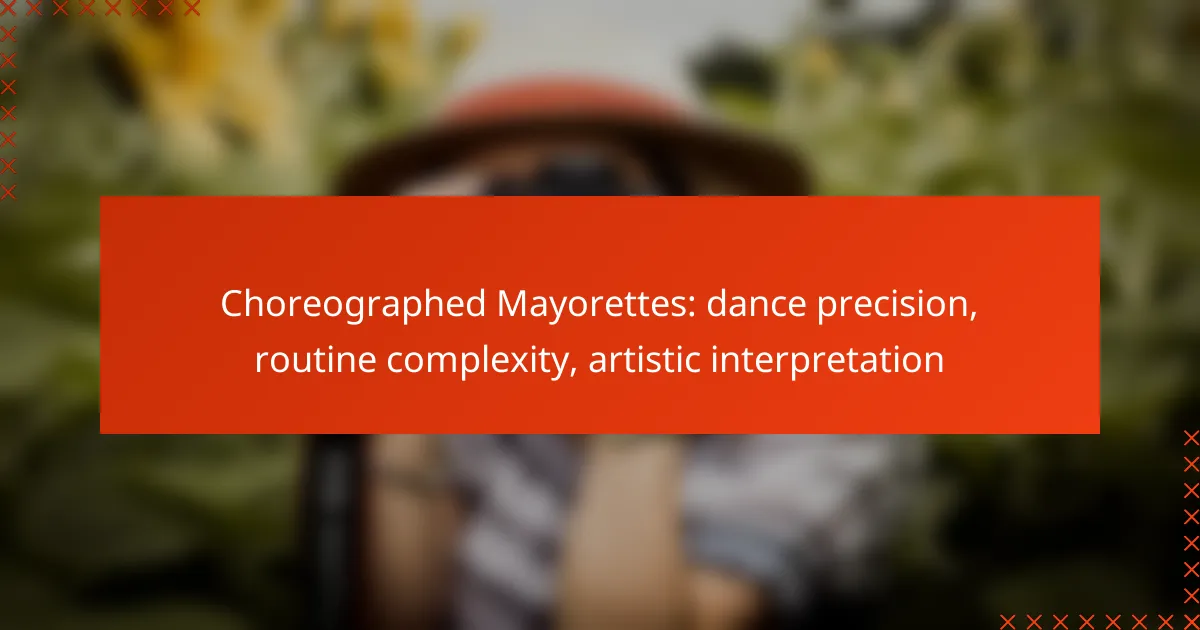Group Mayorettes in Canada exemplify the power of teamwork through their synchronized routines, which enhance collaboration and unity among members. By focusing on choreography precision, timing, and coordination, these performances create a visually captivating experience that showcases the strength of collective energy and shared purpose.
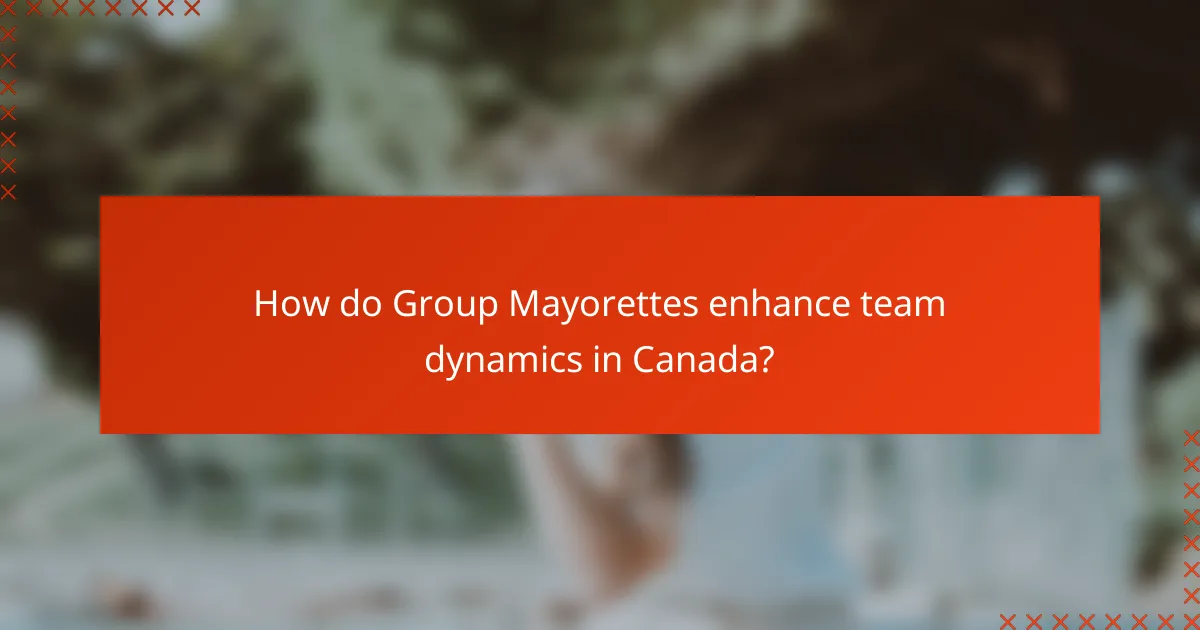
How do Group Mayorettes enhance team dynamics in Canada?
Group Mayorettes enhance team dynamics in Canada by fostering collaboration and unity among members through synchronized routines. These performances require effective communication and a shared commitment, which ultimately strengthens the group’s overall cohesion.
Improved communication skills
Participating in group mayorette routines necessitates clear and concise communication among team members. This environment encourages individuals to express their thoughts and ideas openly, leading to enhanced verbal and non-verbal skills.
Regular practice sessions and performances create opportunities for members to provide constructive feedback, helping to refine their communication techniques. As a result, mayorettes often find they can convey messages more effectively both on and off the field.
Strengthened camaraderie
Group mayorettes build strong bonds through shared experiences, such as rehearsals and competitions. These activities foster a sense of belonging and mutual support, which is essential for team success.
Social events, such as team outings or celebrations after performances, further enhance camaraderie. Engaging in these activities allows members to connect on a personal level, creating lasting friendships that extend beyond the routines.
Increased trust among members
Trust is a cornerstone of effective teamwork, and group mayorettes cultivate this through reliance on one another during performances. Each member must trust their teammates to execute their parts flawlessly, which reinforces mutual confidence.
Building trust can be achieved through team-building exercises and open discussions about individual strengths and weaknesses. This transparency encourages members to support each other, knowing they can depend on their teammates in high-pressure situations.
Enhanced problem-solving abilities
Group mayorettes often face challenges during routines, such as timing issues or unexpected changes. Tackling these problems together fosters critical thinking and collaborative problem-solving skills among members.
Encouraging a culture of brainstorming and innovation during practice sessions can help teams develop strategies for overcoming obstacles. This proactive approach not only improves performance but also equips members with valuable skills applicable in various aspects of life.
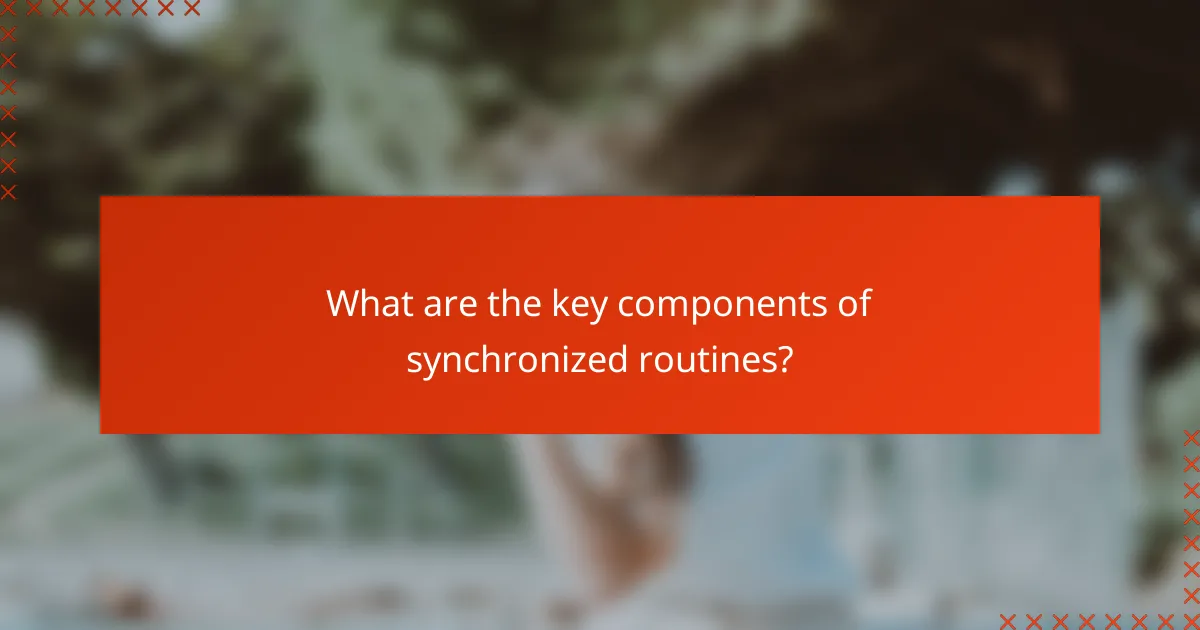
What are the key components of synchronized routines?
Synchronized routines rely on several key components, including choreography precision, timing and rhythm, formation changes, and team coordination. Each element plays a crucial role in ensuring that the performance is seamless and visually appealing.
Choreography precision
Choreography precision is essential for synchronized routines, as it dictates the exact movements and formations that each member must follow. This requires detailed planning and practice to ensure that every participant executes their part flawlessly.
To achieve high precision, teams often break down routines into smaller sections, allowing members to master each part before combining them. Regular rehearsals help reinforce these movements and build muscle memory.
Timing and rhythm
Timing and rhythm are critical for creating a cohesive performance. Each member must be aware of the beat and maintain a consistent pace throughout the routine. This synchronization enhances the overall visual impact and energy of the performance.
Using a metronome or musical cues during practice can help team members stay in sync. It’s also beneficial to establish clear signals for transitions, ensuring everyone moves together at the right moment.
Formation changes
Formation changes add dynamic elements to synchronized routines, allowing teams to create visually striking patterns. These transitions require careful planning to ensure that all members can move smoothly from one formation to another without losing synchronization.
When designing formation changes, consider the visibility of each member and the overall flow of the routine. Practice these transitions repeatedly to minimize errors during performances.
Team coordination
Team coordination is vital for the success of synchronized routines, as it involves communication and collaboration among all members. A strong sense of teamwork fosters trust and helps everyone stay focused on the common goal of delivering a flawless performance.
To enhance coordination, teams should engage in team-building activities and establish clear roles for each member. Regular feedback sessions can also help identify areas for improvement and strengthen the group’s dynamics.

How does collective energy impact performance?
Collective energy significantly enhances performance by fostering a sense of unity and shared purpose among group members. This synergy not only motivates individuals but also creates a dynamic atmosphere that can elevate the overall execution of synchronized routines.
Boosted motivation levels
When team members share a strong collective energy, their motivation levels tend to increase. This heightened enthusiasm can lead to more dedicated practice sessions and a greater willingness to support one another. For instance, during rehearsals, a positive group dynamic can encourage individuals to push their limits and strive for excellence.
To maintain high motivation, it’s essential to celebrate small victories together. Acknowledging progress, whether through verbal praise or team activities, can reinforce commitment and enthusiasm within the group.
Enhanced audience engagement
Collective energy not only impacts the performers but also captivates the audience. A synchronized routine infused with vibrant energy can create a more engaging and memorable experience for spectators. When performers exhibit enthusiasm and cohesion, it draws the audience in, making them feel part of the performance.
To maximize audience engagement, teams should focus on their expressions and interactions during routines. Practicing how to connect with the audience through eye contact and synchronized movements can significantly enhance the overall impact of the performance.
Improved overall performance
Collective energy directly contributes to improved overall performance by ensuring that all members are in sync and working towards a common goal. When team dynamics are strong, routines are executed more smoothly, resulting in fewer mistakes and a more polished presentation. This is particularly important in competitive settings where precision is key.
To achieve this level of performance, teams should prioritize regular practice and team-building activities. Establishing clear communication channels and encouraging feedback can also help refine routines and enhance group cohesion, ultimately leading to better outcomes during performances.
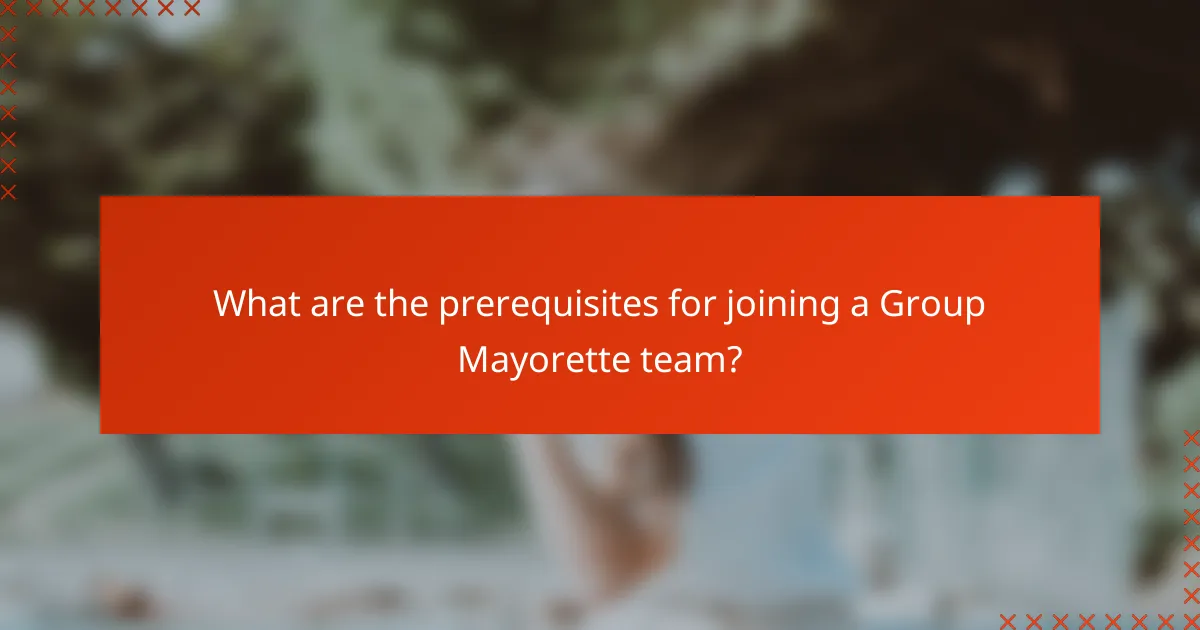
What are the prerequisites for joining a Group Mayorette team?
Joining a Group Mayorette team requires meeting specific physical, commitment, and teamwork criteria. These prerequisites ensure that all members can perform synchronized routines effectively and contribute positively to team dynamics.
Physical fitness requirements
Physical fitness is essential for Group Mayorettes, as routines often involve demanding choreography and endurance. Members should maintain a good level of cardiovascular health, flexibility, and strength to execute movements accurately and safely.
Common fitness benchmarks include the ability to perform basic aerobic exercises for at least 30 minutes and demonstrate flexibility through stretches. Regular conditioning and strength training can help meet these standards.
Commitment to practice schedules
Commitment to practice schedules is crucial for Group Mayorettes, as synchronized routines require consistent teamwork and coordination. Members typically need to attend practices several times a week, often lasting 1-3 hours each session.
Being punctual and prepared for each practice is vital. Team members should communicate any scheduling conflicts in advance to maintain group cohesion and progress.
Teamwork skills
Strong teamwork skills are fundamental for success in a Group Mayorette team. Members must be able to collaborate, communicate effectively, and support one another during routines and practices.
Developing these skills can involve participating in team-building activities and being open to feedback. It’s important to foster a positive environment where all members feel valued and motivated to contribute to the team’s collective energy.
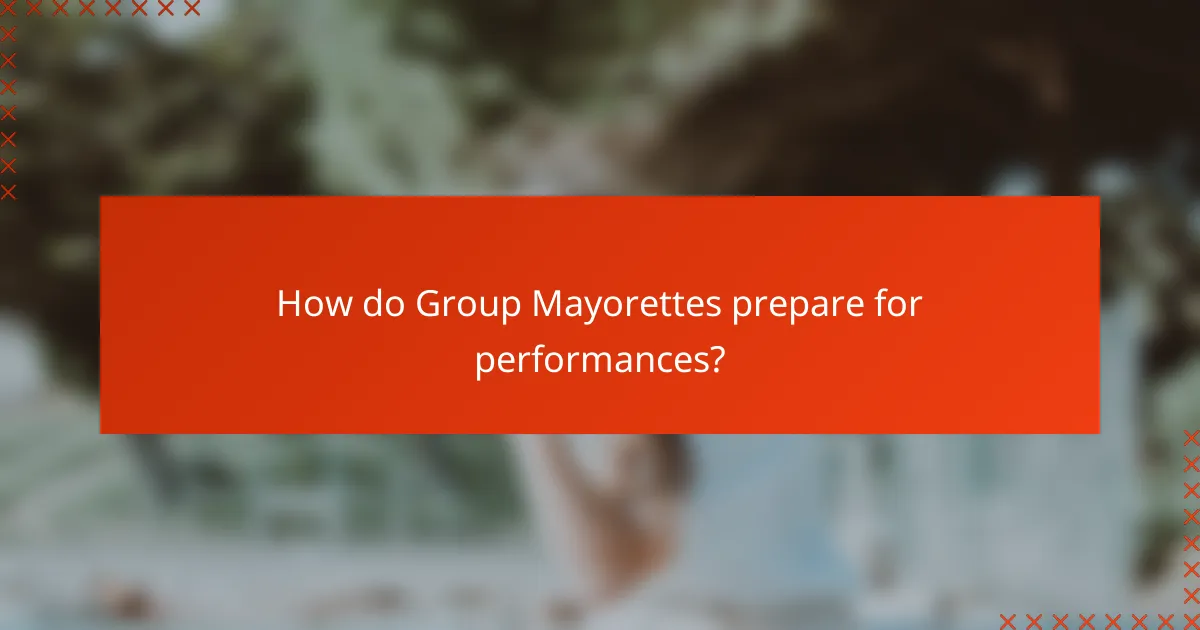
How do Group Mayorettes prepare for performances?
Group Mayorettes prepare for performances through a combination of regular practice sessions, team-building exercises, and meticulous costume and prop preparation. These elements work together to enhance their synchronized routines, strengthen team dynamics, and amplify their collective energy.
Regular practice sessions
Regular practice sessions are essential for Group Mayorettes to perfect their synchronized routines. Typically, these sessions occur several times a week, allowing members to refine their movements and timing. Consistency in practice helps build muscle memory and fosters a strong sense of coordination among the team.
During these sessions, mayorettes focus on various aspects, including choreography, formations, and transitions. It’s common for teams to allocate specific days for different skills, such as dance techniques on one day and marching drills on another, ensuring comprehensive preparation.
Team-building exercises
Team-building exercises play a crucial role in enhancing the dynamics within a group of mayorettes. These activities foster trust and communication, which are vital for executing synchronized routines effectively. Common exercises include trust falls, group challenges, and icebreaker games that encourage collaboration.
In addition to building camaraderie, these exercises help members understand each other’s strengths and weaknesses. This understanding allows the team to support one another better during performances, ultimately leading to a more cohesive presentation.
Costume and prop preparation
Costume and prop preparation is a vital part of the overall performance for Group Mayorettes. Costumes are often designed to reflect the team’s theme and enhance visual appeal, requiring careful selection of materials and colors. Teams typically start this process weeks in advance to ensure that all costumes fit properly and are comfortable for movement.
Props, such as flags or batons, also require attention to detail. Teams must ensure that these items are lightweight and easy to handle while maintaining durability. Regular checks and practice with props help mayorettes become familiar with their use, ensuring a seamless performance.
